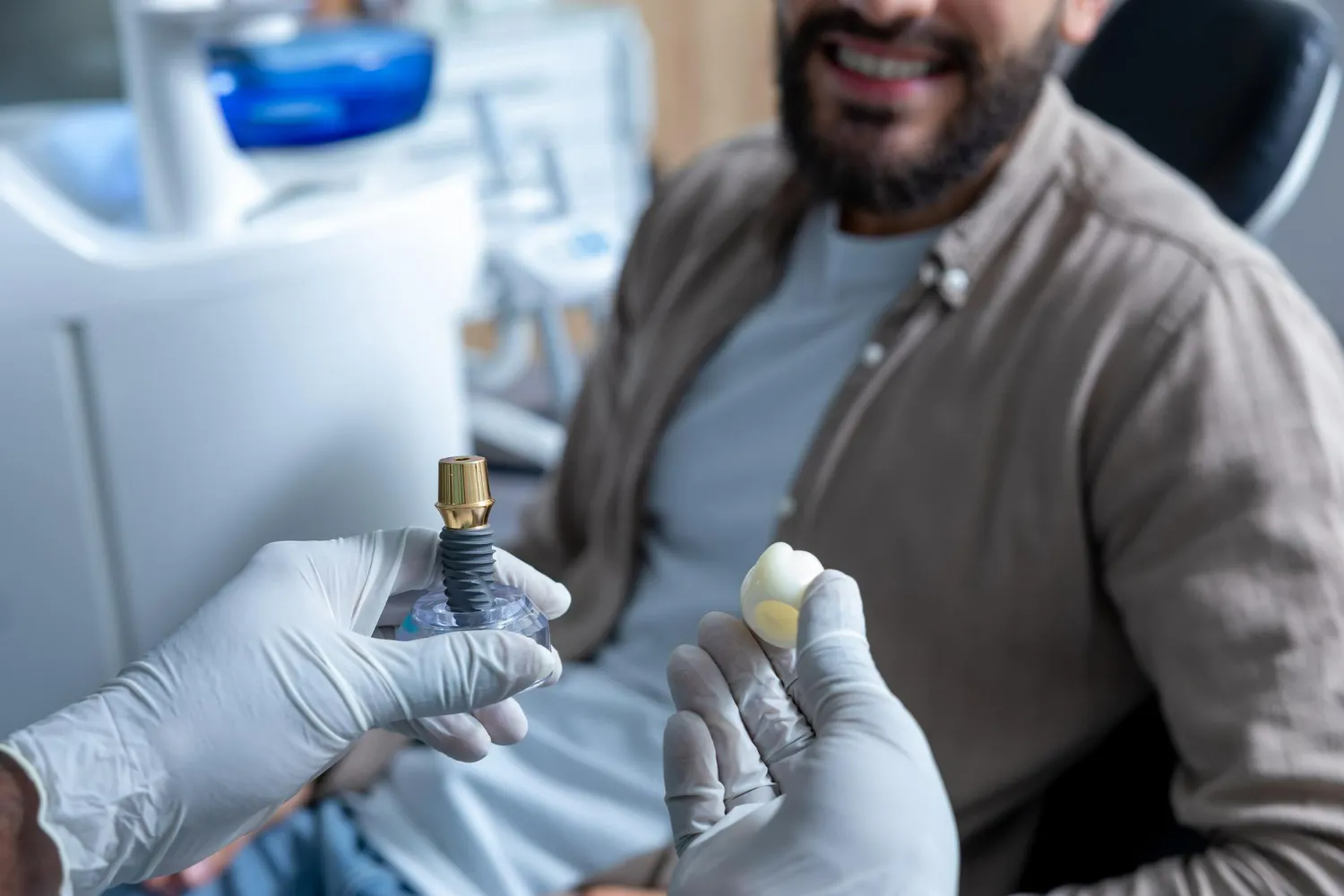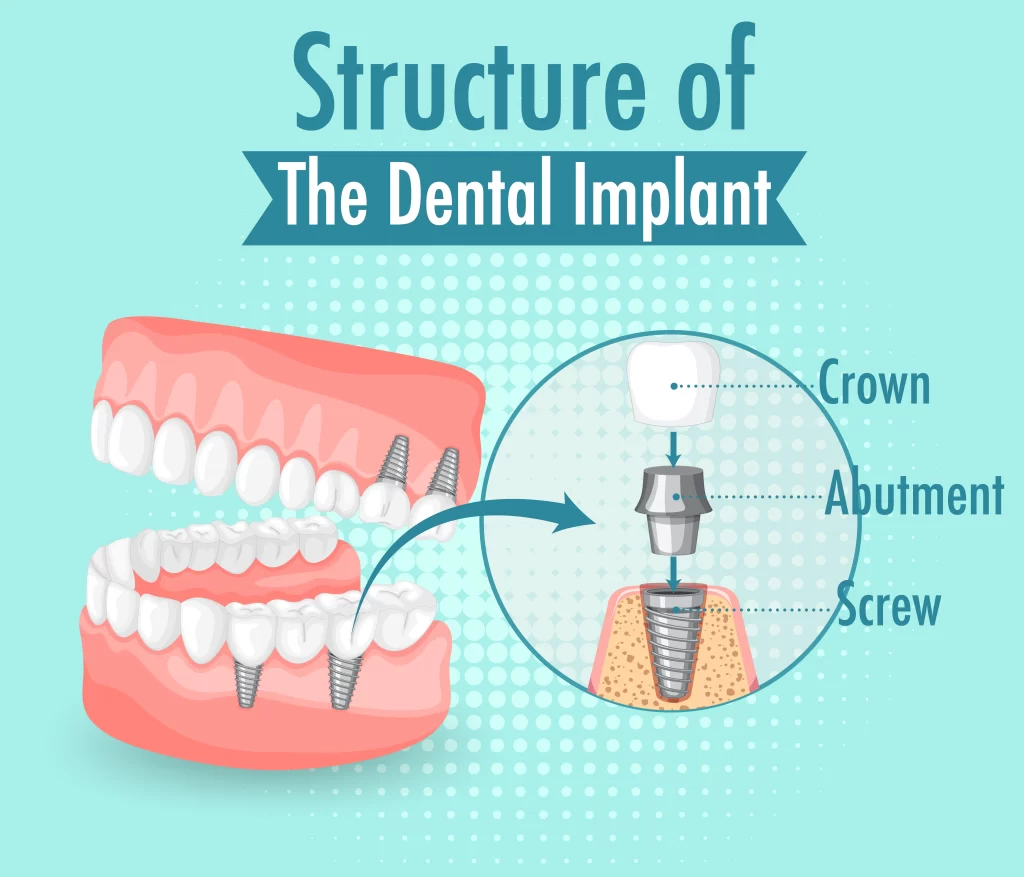Dental implant abutment – What it is, how it works, and how to choose the right one

If the implant fixture is the foundation and the crown is the house you see, the abutment is the solid front door that makes everything meet neatly. This small connector links the healed implant to the new tooth, guiding how the gum sits, setting the angle for the crown, and helping the restoration feel natural when you bite and speak.
Who is this for
- You already have a healed implant and are preparing for the tooth stage
- You are planning an implant and want to understand the parts and appointments
- You care about how the gum will look around a front tooth
Understanding the dental implant abutment

A complete implant has three parts. The fixture sits in the jawbone. The abutment attaches to that fixture and rises through the gum. The crown is the visible tooth that locks onto the abutment. Together they restore appearance, chewing power and speech.
For a clear patient overview of the broader treatment journey, the Australian Dental Association has a helpful explainer on dental implants.
When the abutment is fitted
The abutment is connected after the implant has fused to the bone.
- Two-stage approach
The implant heals under the gum first. At a second visit, the gum is opened gently, the top of the implant is accessed, and the abutment is attached. - One-stage approach
A healing abutment is placed during the initial surgery so the gum shapes around it while you recover.
Your dentist will suggest the sequence that suits your bone quality, gum thickness, tooth position and bite. If you would like practical answers about timing, anaesthesia and what appointments feel like, our clinic’s concise implants FAQ is worth a read.
Types of abutments
By design
- Stock abutments
Pre-made components in standard sizes. These work well when the implant is ideally positioned and the gum thickness is predictable. - Custom abutments
Designed from your digital scan to fine-tune the emergence profile, correct small-angle issues and support a crown that blends with the gum line. Commonly chosen for front teeth.
By crown retention
- Screw-retained
The crown is fixed with a small screw, accessed through a tiny opening that is sealed after fitting. This makes future maintenance straightforward. - Cement-retained
The crown is cemented to the abutment. The surface is uninterrupted, which can look very natural, but any excess cement must be meticulously cleaned to protect the gums.
By material
- Titanium
Strong, biocompatible, and widely used, with a long clinical track record. Often selected for back teeth, where chewing loads are higher. - Zirconia
Tooth-coloured ceramic that can improve colour in thin gum tissue at the smile line. Commonly bonded to a titanium base for strength.
Quick comparison
| Abutment type | Best suited to | Appearance | Maintenance | Key point |
| Stock titanium | Well-positioned implants | Good | Simple | Cost-effective and robust |
| Custom titanium | Angulation correction or strong bites | Good | Simple | Tailored emergence profile |
| Custom zirconia on a titanium base | High aesthetic front teeth | Very high | Simple | Natural gum margin colour |
| Screw-retained crown | Cases where retrievability matters | High | Excellent | Easy access if repair is needed |
| Cement-retained crown | When a screw opening would be visible | Very high | Careful cement control | Clean margins protect gums |
What happens at the abutment appointment

- Preparation
The area is numbed. If the implant has been covered by gum, a small opening is made to access the top of the fixture. - Connection
The abutment is seated and tightened to the manufacturer’s torque value, then re-checked after five minutes to account for settling. - Scan or impression
A digital scan or mould records the abutment position so the laboratory can make a crown that fits precisely and meets the opposing teeth correctly. Shade tabs are photographed under natural light to confirm colour. - Gum shaping
The gum is contoured around the abutment to create a natural collar. Front teeth may use a temporary crown to guide the tissue before the final crown is fitted. - Crown fitting
Contacts and bite are adjusted so the tooth feels natural. Your dentist will confirm when to return to normal chewing.
For a neutral outline of recovery and visit timing, Healthdirect’s patient summary of the dental implant procedure is useful.
Stock or custom: how to choose
Custom does not mean cosmetic for the sake of it. A custom abutment can redirect a crown when the implant is slightly angled, reduce food traps, improve speech sounds for front teeth and soften colour through thin gum tissue. Stock abutments remain excellent when the implant is ideally positioned and tissues are thick and healthy.
Real-world example
A 42-year-old teacher with a thin gum biotype needed a front tooth restored. We used a custom zirconia abutment on a titanium base to avoid a grey hue. Tissue stability was reviewed at follow-ups, for example, two and six weeks, then the final crown was shaded to match in daylight.
Practical considerations include:
- Smile visibility and gum thickness
- Implant angle and depth
- Bite forces and habits such as grinding
- Long-term maintenance and value
If your treatment is moving from a healed implant to a permanent tooth, it helps to understand how crowns are designed to seat accurately on abutments. Our practice’s page on dental crowns explains materials, fit and shade matching so the final tooth blends with neighbouring enamel.
Soft tissue and bone considerations
Healthy, well-shaped gum is the frame of the picture. It shields the bone and completes the illusion of a natural tooth. Some cases benefit from provisional crowns that train the tissue before finalising the restoration. Where the upper back jaw has limited height, your clinician may discuss grafting to support long-term stability. Our overview of a sinus lift explains when that step is considered and how it contributes to predictable results.
Lifestyle matters too. Tobacco slows healing and increases inflammation around implants. The Better Health Channel’s guide to smoking and oral health outlines the risks and the benefits of quitting.
Care and maintenance
Daily cleaning is straightforward. The key is reaching under the crown edge and around the abutment collar every time.
- Brush twice daily with a soft brush and fluoride toothpaste
- Clean under crown margins with superfloss or size-tested interdental brushes
- A water flosser can help as an adjunct if your dentist recommends it
- Wear a night guard if you clench or grind; your clinician will confirm if it is indicated
- Keep routine hygiene visits to monitor gum health and screw stability
Example from follow-up care
A patient returned three years after a molar implant with a small porcelain chip. Because the crown was screw-retained, we removed it, polished the chip and reseated it the same day.
Glossary
- Emergence profile
The way the crown and abutment rise from the gum which affects cleaning and appearance. - Healing abutment
A temporary connector fitted during healing that shapes the gum for the final crown.
The abutment in your overall plan
The abutment is the part we tune so the gum, crown, and bite all align. If you are comparing long-term options before or after implant placement, our practical comparison of an implant versus a dental bridge sets out function, maintenance and longevity in plain terms. If you want the full pathway from healed implant to final tooth, review dental implants and, when you are ready, book a time through our contact page to map timelines, components and costs. You will receive an itemised treatment plan before proceeding. At the consent visit, we discuss risks such as screw loosening, porcelain wear and peri-implant inflammation, and how we monitor and manage each.
Final thoughts
The abutment may be small, but it carries real weight. It secures the crown, shapes the gum and helps the restoration behave like a natural tooth. Matching the design and material to your biology and your bite is what turns a good result into a great one. A comprehensive consultation will give you a clear, step-by-step plan tailored to your mouth and your goals.
Clinical note:
All procedures carry risks and benefits. Your dentist will discuss alternatives and likely outcomes before treatment. Individual results vary.
